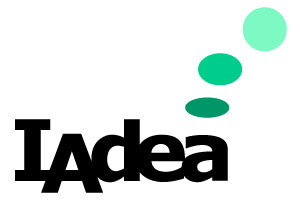
Hot desking eliminates hierarchy, allows flexibility, and promotes social interaction between employees. Despite that, it has never been everyone’s cup of tea. What are the most popular alternatives to hot-desking in the modern open office?
Back in the 1940s, the open office emerged from the belief that to break down the social walls dividing people, you had to break down the real walls too. With the partitions removed, office design and seating arrangements had to be rethought to embrace flexibility. Eventually, this led to the birth of hot desking. In this article, we take a look at its pros and cons and overview the most popular alternatives to this widely adopted yet harshly criticized office setup.
Hot or Not? The Problem with Hot Desking
Hot desking is a popular seating strategy where multiple employees use a single workstation during different time periods. It is based on the first come, first served principle, meaning that no prior reservations are required. Just come, sit, and work as long as you need.
Hot desking entails many wall-breaking ideas of the pioneers of the open office. It eliminates organizational hierarchy by applying the same seating rules to everyone, despite their title or status. It allows flexibility and promotes social interactions between employees. Above all, it is very cost- and space-efficient. Having multiple employees sharing one workstation helps company owners cut down cost on expensive office leases.
However, hot desking has never been everyone’s cup of tea. The free-wheeling seating cannot offer much-needed predictability and ensure the most productive work environment for everyone. Some individuals prefer working around other people, others may need silence or… a dual monitor, which, because of hot-desking policies, are not always accessible. Such situations can create tension and may lead to conflict.
Lastly, the global pandemic raised the question: “Is hot desking compliant with workplace health and safety?” Although workplace technology offers ways to adapt to the changing standards (for example, establishing steps such as workspace check-in can help in controlling capacity and track used desks for sanitization), many organizations have started to look for alternative seating arrangements, at least for the time being.
However, desk booking solutions such as that by IAdea and YAROOMS can eliminate much of the so-called free-wheeling that is expected of hot desking. The results are the benefits of hot desking—such as flexibility and cost savings—but all done under a well-regimented system that returns fantastic results in terms of productivity and employee satisfaction.

Assigned Seating
With everyone having a permanent, designated workstation at the office, assigned seating caters to the need for structure and clarity. It is transparent (because everyone knows where to find their colleagues), and anchors employees to their personal space.
In contrast to other open office seating policies, the assigned seating setup is the least sensitive to the needs of employees. There is not much space for mingling around, working in teams, or choosing the environment. In a way, assigned seating is reminiscent of cubicles: although the boundaries are not visible, they still exist.
This limiting nature might be the reason why organizations that need to keep most of their staff onsite temporarily opt for assigned seating in their return-to-work strategies. Orderly in its essence, it does not require complex management and is relatively safe. In the transitional office, assigned seating helps establish bigger and more distanced personal workspaces, minimize social interactions, and keep up with hygiene standards.
Desk Hoteling
Much like in an actual hotel, a desk hoteling setup requires booking one’s desired workstation upfront, or on an ad-hoc basis, and to then check in to them upon arrival to the office. Advance planning is the only difference that separates hoteling from hot desking, but it solves the major problem associated with the latter. By booking in advance through the YAROOMS desk booking app for example, a workspace can be secured thus eliminating frustration by managing expectations.
With desk hoteling, employees can choose their desired workplace well ahead of time to make sure it is reserved for them. The consequences of spontaneity are the booker’s responsibility. By engaging everyone in a smooth planning process, desk hoteling combines the pros of assigned seating — order and organization — with the flexibility of hot desking.

The WDB-001, with integrated HID and NFC readers, requires a simple tap or swipe of your company-issued ID card to check in or out of your reservation.
Issues can commonly arise when companies rely exclusively on software. For example, when a desk may appear available to the eye, a user sits down thinking it is free for use without checking the booking system to see it is already reserved. An integrated desk booking device, such as IAdea’s WDB-001 can quickly signal a potential ad-hoc user the status of a workspace as being already in use, and that they should locate an alternative space. This avoids a potential misunderstanding when the person who made the original reservation shows up.
Compared to other seating setups, desk hoteling is more challenging for employers, not employees. Some organizations hesitate to implement it because establishing the planning rules and rolling out the process might seem time-consuming. The truth is, it is only so when it is done manually. However, this issue is easily overcome with the help of technology and software. With an IAdea desk booking device installed at each space, the booker can quickly scan their workplace issued ID card or even their enabled phone to check-in or out in a flash using the device – no need to check-in at the front desk! Evidently, workspace management solutions are indispensable from successful desk hoteling arrangements.
Activity-Based Working
Activity-based working is based on the idea that people perform a set of different tasks every day, therefore, they need a variety of environments to carry them out effectively. Starting the morning with a couple of video calls in a private office, joining the project team for brainstorming in a collaboration hub, moving to a shared desk after lunch, and ending the day pitching your ideas to co-workers in a conference room – sounds like a perfect activity-based working scenario.

The YAROOMS space search engine can offer you suitable suggestions by simply entering your necessary criteria.
Spaces are essential in the activity-based working setup, but their main focus is people and their actions. It pushes employees to reflect on their to-dos and decide what is the most suitable environment to accomplish them. By taking into consideration different preferences, styles of working, and even relationships between colleagues, activity-based seating is programmed to yield increases in productivity and employee satisfaction. The YAROOMS booking engine can run quick searches and offer suitable suggestions for spaces to book based on the users inputted criteria such as building, floor, number of desired seats, date and other feature requirements.
Once booked, users can easily tap to check-in for the reservation, and once they are done tap again to check out and free up the room for other users immediately. Alternatively, the system can signal to the cleaning team that it needs sanitizing before being useable again.
Here, impeccable planning is a must. Without the ability to schedule, reserve, and check-in, the setup would lose its efficiency. Moreover, it could not function in the post-pandemic office. Organizations that want to keep (or adopt) activity-based work nowadays must make sure that their planning tools support important social distancing restrictions or capacity limitation between areas.
These four open office seating arrangements diverge in how employees access space and how much control the workplace has. Desk hoteling and assigned seating are a good fit for organizations looking for more control over capacity and space utilization, while hot-desking and activity-based working are more agile and unrestricted. To achieve success though, desk and room and booking solutions can bring great calm in a sea of potential chaos through a systematic approach to managing how workspaces are shared and utilized. IAdea and YAROOMS provide a joint solution that can fully enable a hot-desking or hoteling environment and enhance productivity across enterprise workplaces.
[This article first appeared on blog.yarooms.com]

